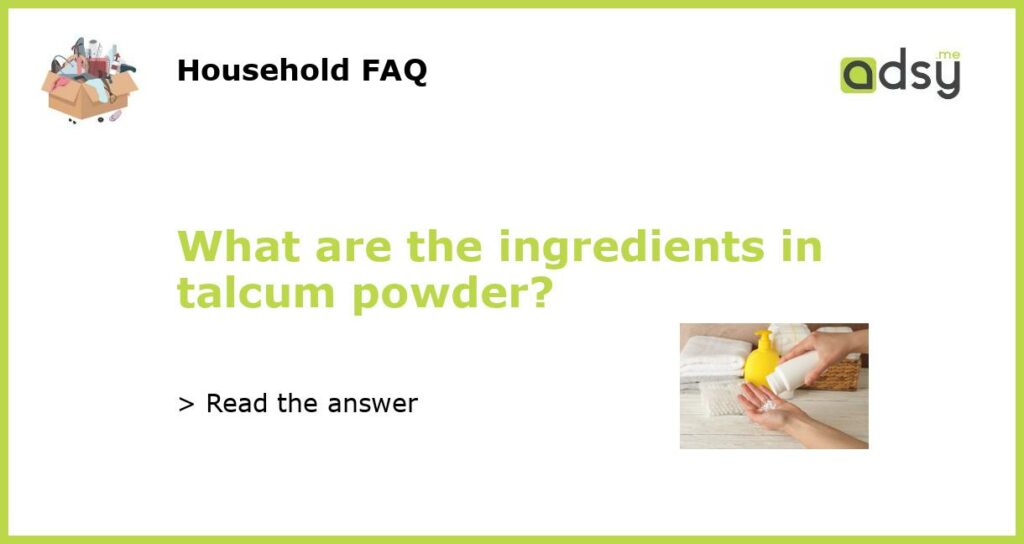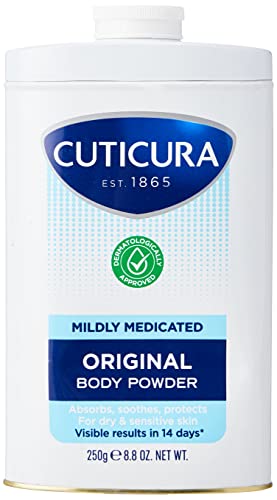Understanding Talcum Powder
Talcum powder is a widely used personal hygiene product that is made from talc, a naturally occurring mineral. It is commonly used to absorb moisture and reduce friction on the skin, making it popular for use in baby powders, cosmetics, and personal care products. However, concerns have been raised about the safety of talcum powder due to its potential link to certain health issues.
The Main Ingredient: Talc
The main ingredient in talcum powder is talc, a soft mineral that is composed primarily of magnesium, silicon, and oxygen. Talc is mined from the earth and then processed to remove impurities. The resulting talc is then crushed into a fine powder, which can be used in a variety of applications, including the production of talcum powder.
Additional Ingredients in Talcum Powder
While talc is the main ingredient in talcum powder, it is often formulated with other ingredients to enhance its properties or add fragrance. Common additional ingredients in talcum powder may include:
- Fragrance: Many talcum powders are scented to provide a pleasant smell. Fragrances are typically added to the powder during the manufacturing process.
- Cornstarch: Some talcum powders may also contain cornstarch, which can help to absorb excess moisture and reduce friction on the skin.
- Zinc Stearate: This is a white, soft, and fine powder that is used in talcum powder as an anti-caking agent. It helps to prevent the powder from clumping together and improves its texture.
- Preservatives: To ensure the product has a longer shelf life and remains free from microbial growth, talcum powder may contain preservatives. These are added in small amounts to prevent spoilage.
Controversy Surrounding Talcum Powder
There has been controversy surrounding the safety of talcum powder due to concerns over its link to ovarian cancer and respiratory issues. Some studies have suggested a potential association between regular and prolonged use of talcum powder in the genital area and an increased risk of ovarian cancer, while others have not found a conclusive link.
In addition, inhaling talc powder can cause respiratory problems and lung irritation. Prolonged exposure to talc dust in occupational settings, such as mining and manufacturing, has been associated with an increased risk of lung diseases, such as talcosis and lung cancer.
Regulations and Safety Measures
In response to the concerns raised, regulatory authorities, such as the U.S. Food and Drug Administration (FDA) and the European Union (EU), have implemented regulations and safety measures to ensure the safe use of talcum powder in cosmetic and personal care products.
The FDA has indicated that it expects manufacturers to ensure that talcum powder products are free from asbestos, a naturally occurring mineral that is often found near talc deposits and can contaminate talc products. Asbestos is a known carcinogen and has been associated with various health issues, including lung cancer and mesothelioma.
Furthermore, companies producing talcum powder are encouraged to follow Good Manufacturing Practices (GMP) and conduct rigorous testing to verify the safety and quality of their products. This includes testing for the presence of asbestos and adhering to strict quality control standards.
Consumers are advised to follow the instructions provided by manufacturers, use talcum powder sparingly, and avoid inhaling the powder during application. If concerned about the potential risks, individuals may choose alternative products, such as cornstarch-based powders, which do not contain talc.






